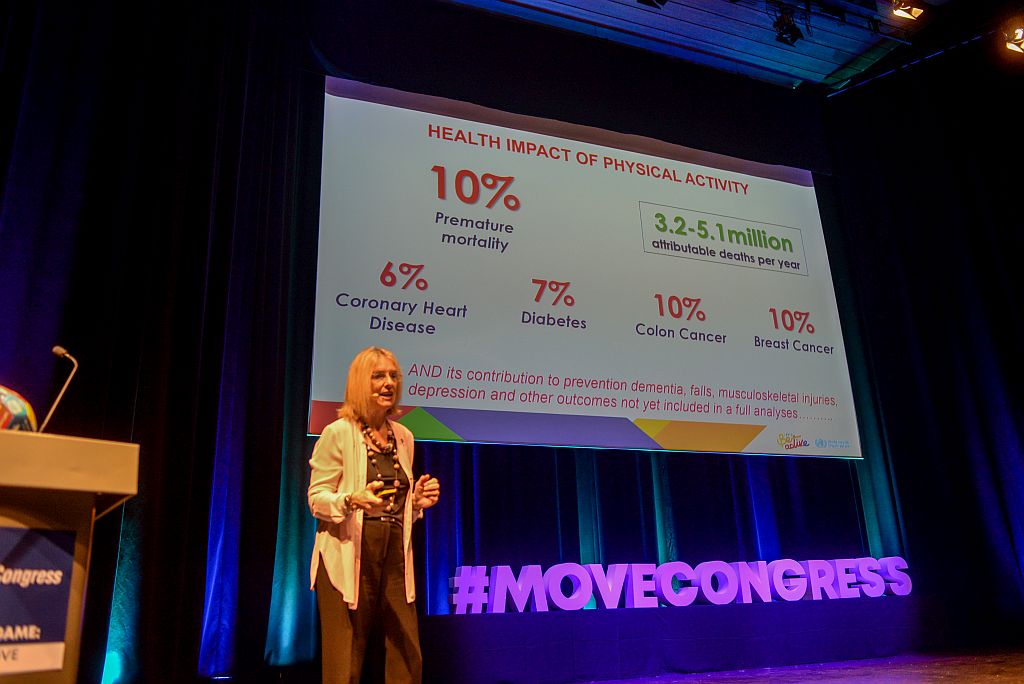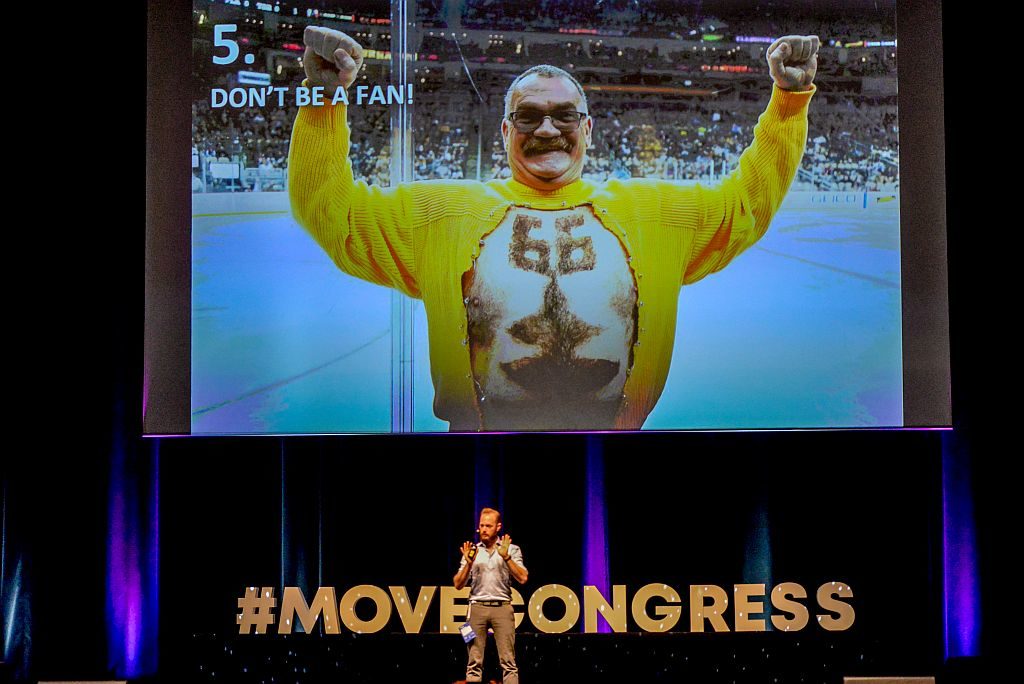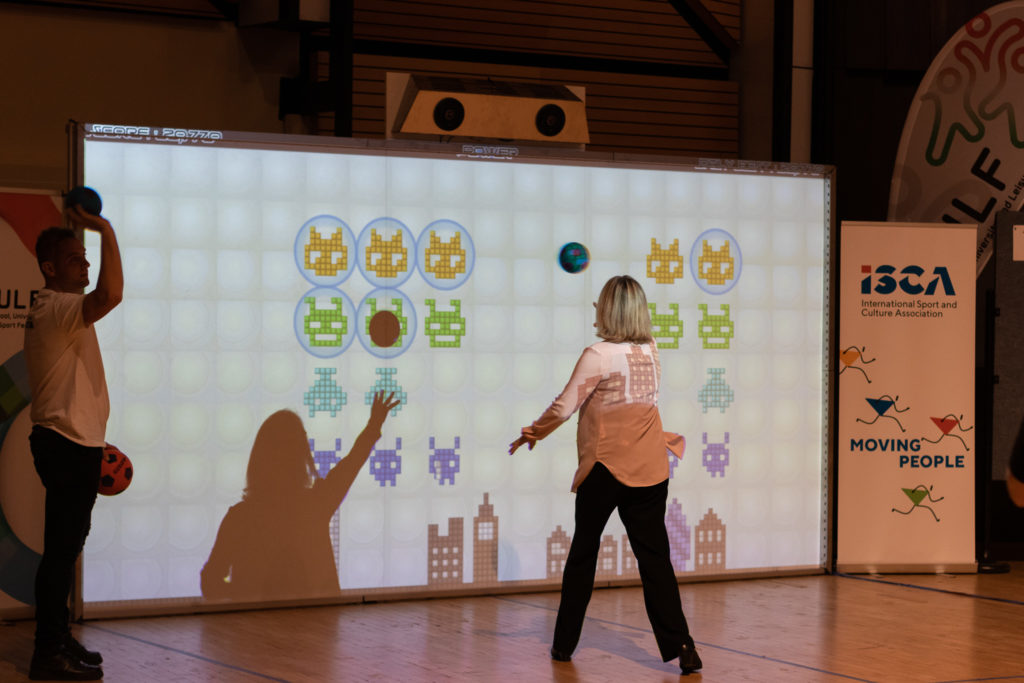
Push the boundaries, think younger and embrace change to get more people moving
Dr Fiona Bull from the World Health Organisation (WHO) and Markos Aristides Kern from Fun With Balls commanded the stage in the MOVE Congress plenary on 17 October with TEDx style charisma, zooming in on physical activity from two vastly different angles and reaching one surprisingly similar conclusion. That we need to seriously challenge ourselves when it comes to getting more people active.
Challenge ourselves to reach people who are inactive and likely to fall outside the radar of our daily work. To think younger. To embrace change. And to push the boundaries, even if it raises a few eyebrows and shocked gasps.
And if we’re a little too in step with the times, to take a step back and think about how to get moving again.
“We might be trending, but we are too inactive,” Dr Bull pointed out.
The WHO launched its Global Action Plan for Physical Activity last year as an open invitation for stakeholders across sectors to contribute to a “whole systems approach” to raising physical activity levels worldwide. What does this mean for the MOVE Congress participant? It means that everyone in the room is invited to work together to deliver the plan, she said.
“I hope to inspire you to inspire others. I’d like to invite you because this job is BIG… That’s why this conference is spot on – how do we take this mandate and turn it into action?”
Globally 28% of adults and 81% of adolescents do not meet recommended levels of physical activity. This is resulting in a 10% increase in premature mortality, plus a heightened risk of developing non-communicable diseases such as coronary heart disease, diabetes, colon and breast cancer. 71% of global deaths are attributable to conditions such as these.
“We reduce the risk of ill health by being active,” Dr Bull said. “Anything is better than nothing and the task is to made the least active more active.”
Focusing on target groups who are already engaged in or have an interest in physical activity is not going to make the giant leaps needed to “change the trajectory” of stagnating physical activity levels, which is why health professionals are being encouraged to reach out to the elderly and people working with chronic diseases and supporting, assessing and following up “prescriptions” of movement.

The secret to pulling the “yay!” trigger – and why you shouldn’t be a fan of the sport you work for
Markos Kern is an entrepreneur from the tech and start-up world who noticed a threat to traditional sport and saw a way of breathing new life into a struggling sport. The answer was to fuse tech with squash, creating Fun With Balls and a growing range of interactive racquet sports that take the concept of Nintendo Wii to the next level.
“Some sports are literally trying to disappear,” he said, mentioning ageing members and traditional, stuffy facilities that repel rather than attract many younger members.
“We chose to focus on [transforming] squash for that exact reason.”
The secret is finding out how to pull the “yay!!!” trigger in people’s brains – the endorphins that are released when discovering a new pastime that they enjoy and do well at. Social media, online gaming and other digital media are replacing sport when it comes to triggering this excitement, he says. They can be downloaded and accessed in seconds, don’t require any transport to get there and are equipped with clever programming that hooks the user by rewarding them with points and social validation.
Reviving traditional sport and physical activity is about making it fun in the tech age, and promoters need to revise their reality checklists to 1) Better understand young people and what drives them, 2) Embrace change, 3) Don’t be too much of a fan of the sport they are promoting – take a critical approach to its shortfalls and 4) Don’t go it alone – find someone who shares the same passion and drive to boost your activity or product.
But finding the activity that releases the “yay!” endorphins may not be as easy as it sounds. To succeed, you have to have some balls, and Kern is not afraid to push all provocative buttons when it comes to getting his message across.
“People love outstanding things and this gets harder and harder every day [to provide].”
In a presentation punctuated with pictures of graphic injuries, obesity, videos of spectacular sporting “fails” and endlessly boring pro tennis rallies, Esports tournaments, and a colourful prompt not to keep calm but to “F****** panic!”, Kern showcased how pushing the boundaries certainly beats conservatism and complacency when discovering solutions to the inactivity crisis.
And then he challenged Dr Bull to a quick game of multiBALL…



